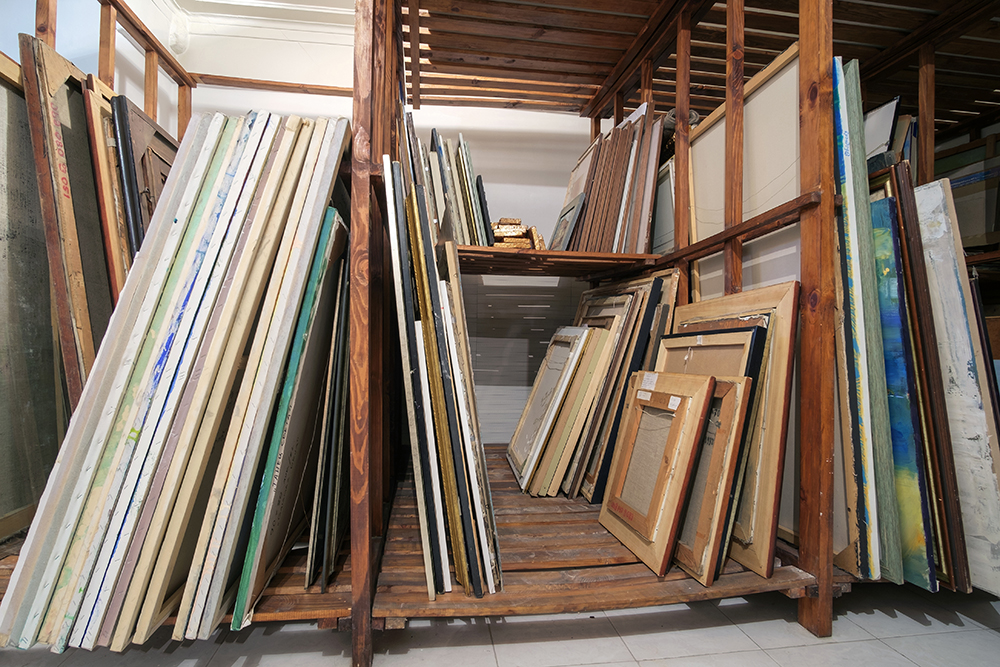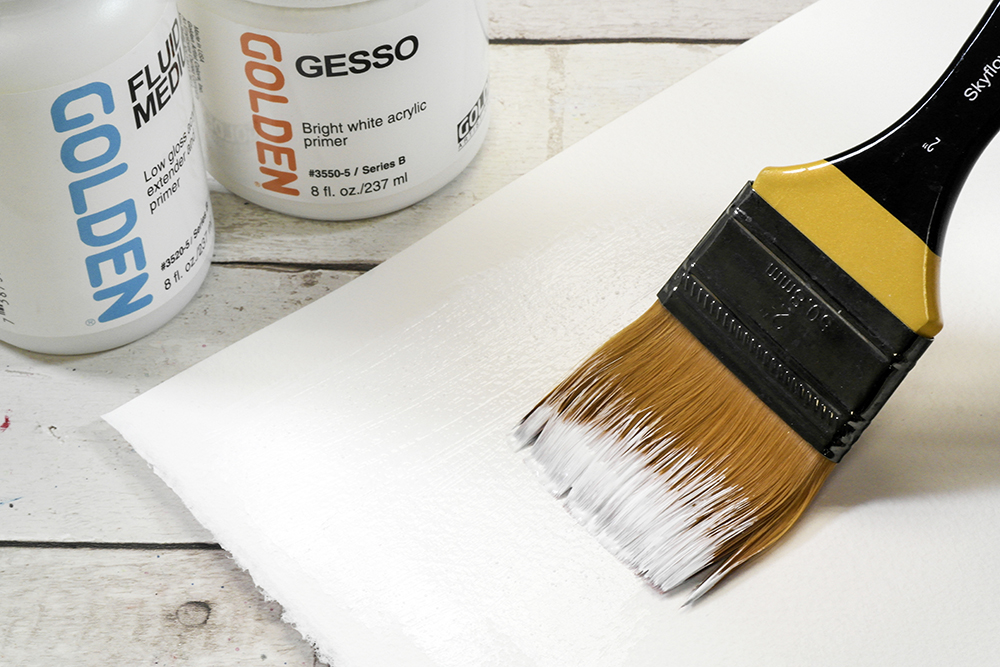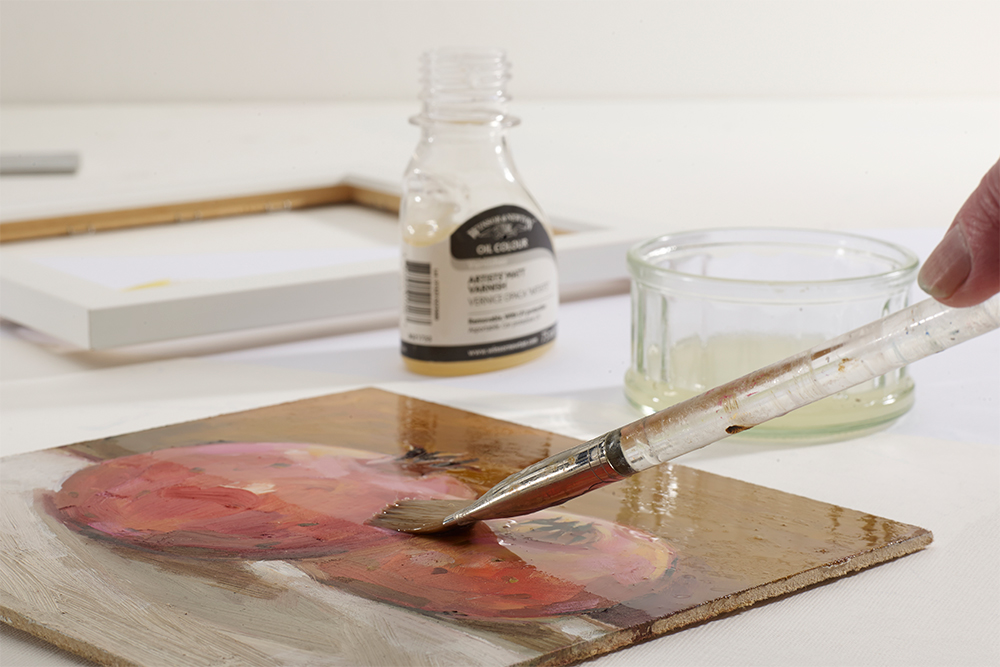
How to Choose the Right Oil Paper
Oil Painting Papers offer an accessible, affordable surface that has some of the familiarity of canvas but without its weight and bulk. Even better – these papers come ready primed, so you don’t need to spend time prepping them before painting. They’re perfect for quick studies as well as finished paintings. Here we take a look at our oil painting paper range, see how they differ from other art papers and discuss how to prep other papers so they are ready for oil painting.

When you think of oil paint and paper your first reaction will probably be that the two don’t mix. It may surprise new oil painters in particular to hear that oil painting on paper is totally feasible. While it’s true that most paper will absorb oil and steadily degrade over time, oil papers are specially treated to dramatically reduce this happening. In fact, Winsor & Newton dispel any myths that paper isn’t suitable for oils:
So providing your paper is properly treated, there is absolutely no reason why you shouldn’t use oil paint on it. Its only weakness will come from its lack of rigidity. Historically, canvas and panel have been much more popular than paper – but today’s oil painting papers provide artists with a reliable, permanent surface that requires little to no preparation. It’s also comparably more easy to store, transport and ship. There are even options for artists looking to prep other types of paper they already own to make them suitable for use with oil paints. Find out more about our oil painting papers and prepping other papers for oil painting by using the links below or continue reading for a full overview.
What is Oil Painting Paper
Oil painting papers are specially treated to bring out the best performance of your oil paints. Oil paint is essentially made up from two key components – the pigment and the oil binder. The oil binder is the part that poses the problem for paintings made on paper. In an untreated paper, the oil content of the paint would quickly absorb into the paper fibres. Not only will this make your paper rot over time, it will also cause your paints to become dull and flat. As the paint loses its binder it will also begin developing adhesion problems. In the worst case scenario you will find that your oil paint begins crumbling away. The good news is that any oil painting paper contains size to prevent this happening.

Sizing to control absorption
Size is essentially a sealant that acts as a barrier between the paper and whatever paints and mediums you apply to it. It dramatically reduces the amount of oil that absorbs into the paper, so you needn’t worry about the long-term longevity or integrity of your paints. While no paper is 100% resistant to oil absorption, oil papers reduce it to a point where you needn’t think too much it affecting your painting. This sizing ensures your paint will sit radiantly on the paper’s surface, retaining its brightness and gloss.
Which oil paints should you use on oil painting paper?

Oil Painting Papers are suitable for use with any oil paints – whether you prefer working with traditional oils, fast-drying alkyds, water-mixable oils or oil sticks. If you thin your water-mixable oil paints with water alone you may notice that the paint beads up a little, especially with very dilute applications. Working with fast-drying alkyd oil paints will further reduce the seepage of oil into your paper.
Texture and Composition
All oil papers have some degree of tooth and texture to them. The majority are pressed with a linen-like pattern that mimics the tooth and drag you’d experience on genuine canvas. Two notable exceptions are Arches Huile and Fabriano Pittura. Both these papers have an irregular texture to them, that is more akin to a NOT watercolour paper. Colour wise, oil painting papers range from almost white to a creamy off-white.

Most of our oil painting papers are made from acid-free wood pulp. This pulp is free from lignin to ensure that it is archival. The only exception is Arches Huile, which is made from 100% cotton. Cotton is the purest form of cellulose available for paper making, and imparts exceptional strength and resilience on this surface.
Why Should I use Oil Painting Paper instead of Canvas?
Paper offers many benefits over traditional stretched canvases, canvas boards and painting panels. For beginners, the price of paper is a lot more accessible. It’s great for testing out new mediums and you will have fewer inhibitions or worries about ‘wasting’ expensive art supplies. This makes it much easier to practice and learn the ropes of a new medium. If you find you really enjoy it there will always be the option of canvas and panels should you require them.

It also makes a fantastic surface for artists who like the idea of painting on paper, but who are reluctant to spend the time and money on priming other papers. These papers can be painted on as soon as they are in your hands – so you’re ready to create as soon as inspiration strikes!
Oil paper is also much easier to store, transport and ship. This makes it ideal for artists who go to classes or paint outdoors. Carrying a pad of paper is much easier than lugging about bulky canvases or heavy boards. Paintings on paper can also be stored and shipped flat, with comparatively few materials and space required to ship them.
However, there are some downsides to using paper. Generally, paper isn’t advised for very thick applications of paint. It is much more flexible and fragile, and therefore more susceptible to damage than either canvas or panel. Humidity will cause your paper to expand and contract – a phenomenon that becomes more visible with age. Some artists choose to combat this deterioration by adhering their oil paintings on paper to board for extra support, with some also framed behind glass.
Our Range of Oil Painting Papers
We have a wide range of oil painting papers from well established art brands. Each of the papers below comes pre-primed so you don’t have to worry about prepping when your paper arrives. You can put paint to paper as soon as they’re in your hands! Our oil painting paper range includes:

These papers vary slightly in their colour and texture. Most of them are pressed with a canvas-like texture, however the Arches and Pittura both have a surface similar to NOT watercolour paper. Although it isn’t strictly a canvas ‘paper’, Canvas Pads offer the familiarity of painting on genuine canvas, but without the bulk of a stretcher. These pads include sheets of genuine canvas, that are pre-primed so you don’t have to worry about prep. Like paper, these pads will warp with heavy applications of paint.

Do I have to paint on Oil Painting Paper?
The short answer to this question is ‘no’ – you don’t have to use an oil painting paper if you are working in oils. However, if you choose to work on a non oil painting paper you’ll need to do a bit more preparation and priming of the surface. Without this you’ll find the oil binder will leach into your paper meaning your paints won’t adhere and will dull over time. In the worst case scenario your paint could crumble from the surface. Some artists feel that the time spent prepping and priming isn’t worth the hassle. Whereas for others, the extra work helps them achieve a surface that perfectly suits their painting process.

For many artists, working with a non oil painting paper offers them more choice in both weight and texture. For example, you’ll find few oil painting papers that exceed 300gsm (Pittura is our heaviest at 400gsm). If you work in oil, and don’t mind a bit of extra work you could choose to work on a heavy weight watercolour paper up to 640gsm. Our best quality, 100% cotton watercolour papers will offer the best stability and longevity, and externally sized papers will mean the paper absorbs less oil. You’ll also have the choice of working on a smooth (Hot Pressed), moderately textured (NOT) or highly textured (Rough) surface. These textures will remain even after you apply size and primer, which can bring interesting properties to your paintings. While its worth investing in a heavy paper for your finished paintings, a lighter weight paper would be perfect for quick studies.
Preparing your paper for use with oil paints
You can prepare most papers so they are suitable for oil painting. It breaks down to just two processes – sizing the paper and priming the paper. Size is a substance added to paper to control its absorption. Priming coats your paper in a substance (usually an acrylic-based Gesso or Oil Primer) that provides a bit of ‘tooth’ for your paints to adhere to.
Using oil paint on paper really highlights the importance of appropriate surface preparation. Poor preparation not only leaves your painting vulnerable to deterioration, but also creates lots of extra work for those who look after your artwork in the future.
Sizing your paper

Size is essentially a sealant that controls absorption and reduces the amount of oil that leeches into your paper. You can also use acrylic mediums to size paper ready for oil painting. In the examples shown below we used two different mediums – Golden Fluid Matte Acrylic Medium and Golden Matte Acrylic Medium – to size the paper. One thin layer of size should be sufficient – although if you are using an oil-based primer rather than acrylic gesso you may need to apply more layers.
Priming your paper
Primer sits between the size and the paint you apply. It has ‘tooth’ which means that it will stick to your paper better than paint alone, and will also add texture for your paint to adhere to. If you’re working on paper then you can use either acrylic gesso or oil based primer. Apply Gesso or primer in thin layers, only adding successive layers if the previous layer is completely dry. You should brush each layer on in the opposite direction to the layer before. The final layer will form the ground that your paint can properly adhere to. This final layer will have a natural tooth. The act of applying your gesso in different directions will also add to its texture.

It’s worth noting that your paper does need to be reasonably heavy to withstand the application of size and primer without warping. The main challenge will be keeping your paper flat. If you find your paper is cockling, you can tape down the edges of your paper to reduce it. Once dry you can also run the paper over a table’s edge to counteract the warping. Once size and primer are on the paper you should leave it to dry for 3 days before you apply your paint.
Other Papers Suitable for Oil Painting
You can prep almost any paper for painting with oils – but you’ll need to think about what you want from your painting in order to select an appropriate paper.
If you’re just looking to create quick sketches or colour studies then you’ll probably find that a fairly lightweight cartridge or watercolour paper is suitable. You could also get away with simply treating the paper with a few layers of gesso and forgoing the altogether if longevity isn’t a concern.
Watercolour Paper
Watercolour Paper is available in a good range of weights and textures. Investing in a high quality paper also gives you the opportunity to work on a 100% cotton surface – perfect if you’re looking to add to the longevity of your artwork. However costs can soon mount if you choose to opt for the heaviest, 100% cotton papers.
The image below shows two strokes of oil paint – traditional oil (the darker blue) and water mixable oil (lighter blue) – tested on patches of paper prepped and primed in different ways. The samples have been left to dry for over 12 months. It’s clear from looking at the oil staining on the back of the sheet that proper preparation reduces oil seepage.

Cartridge Paper
Cartridge Paper is fairly inexpensive, and is available in a range of weights – however, you won’t get as heavy a paper as you would in our watercolour paper ranges. Lighter weights are prone to cockling when sized and primed, but are still useful for making quick studies. The samples below were painted in the same way as the watercolour paper above, however they have been left to dry for only six months.

Varnishing Oil Paintings on Paper
You should varnish your oil paintings on paper as you would any other oil painting. The application of varnish will not only protect against dust and grime, but will also unify the sheen, protect against UV damage and allows for easy cleaning. The general rule of thumb is that an oil painting shouldn’t be varnished for at least 6 months after it is completed. For thicker applications drying will take even longer – although if you are using paper your applications won’t be this thick.

If you’re not sure whether your painting is dry or not you can test it with a rag. Dip a lint-free rag in solvent and rub it gently on the surface of your painting. Lift the cloth and check it for colour. If it lifts any colour then you’ll need to wait longer for your painting to dry. If there’s no colour on the rag then you can varnish your painting.
Some artists find they can’t wait the 6 months or more for their paintings to dry fully. If you’re in this position and need to give it some temporary protection then you could use retouching varnish. Retouching varnish adds a little durability to a recently finished painting while still allowing it to ‘breathe’ and dry thoroughly. Once your painting is completely dry you can apply your final varnish.
Displaying Oil Paintings on Paper
Oil paintings on paper are susceptible to damage. Because of this it’s advisable to frame them behind glass. Paper is also more vulnerable to deterioration because of its flexibility. You can reduce this flexibility by adhering it to a panel. You can do this using a good quality acrylic medium as an adhesive.
Discover our full range of oil painting papers online, as well as oil paints, oil brushes and oil mediums.
